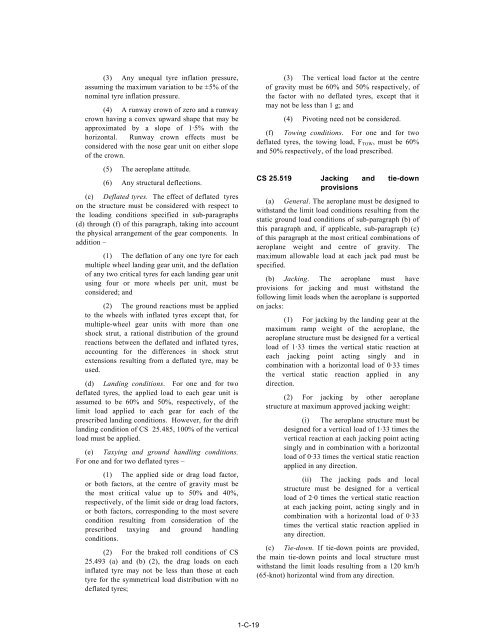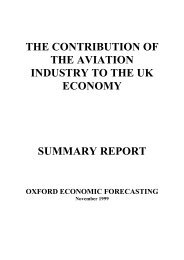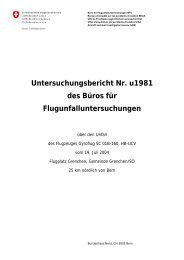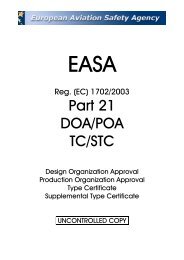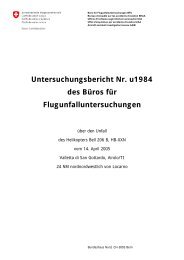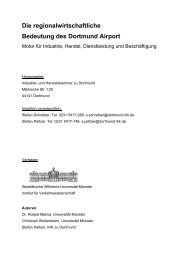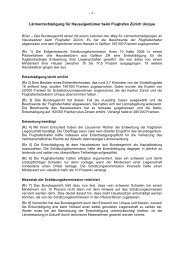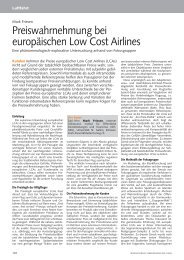European Aviation Safety Agency
European Aviation Safety Agency
European Aviation Safety Agency
You also want an ePaper? Increase the reach of your titles
YUMPU automatically turns print PDFs into web optimized ePapers that Google loves.
(3) Any unequal tyre inflation pressure,<br />
assuming the maximum variation to be ±5% of the<br />
nominal tyre inflation pressure.<br />
(4) A runway crown of zero and a runway<br />
crown having a convex upward shape that may be<br />
approximated by a slope of 1·5% with the<br />
horizontal. Runway crown effects must be<br />
considered with the nose gear unit on either slope<br />
of the crown.<br />
(5) The aeroplane attitude.<br />
(6) Any structural deflections.<br />
(c) Deflated tyres. The effect of deflated tyres<br />
on the structure must be considered with respect to<br />
the loading conditions specified in sub-paragraphs<br />
(d) through (f) of this paragraph, taking into account<br />
the physical arrangement of the gear components. In<br />
addition –<br />
(1) The deflation of any one tyre for each<br />
multiple wheel landing gear unit, and the deflation<br />
of any two critical tyres for each landing gear unit<br />
using four or more wheels per unit, must be<br />
considered; and<br />
(2) The ground reactions must be applied<br />
to the wheels with inflated tyres except that, for<br />
multiple-wheel gear units with more than one<br />
shock strut, a rational distribution of the ground<br />
reactions between the deflated and inflated tyres,<br />
accounting for the differences in shock strut<br />
extensions resulting from a deflated tyre, may be<br />
used.<br />
(d) Landing conditions. For one and for two<br />
deflated tyres, the applied load to each gear unit is<br />
assumed to be 60% and 50%, respectively, of the<br />
limit load applied to each gear for each of the<br />
prescribed landing conditions. However, for the drift<br />
landing condition of CS 25.485, 100% of the vertical<br />
load must be applied.<br />
(e) Taxying and ground handling conditions.<br />
For one and for two deflated tyres –<br />
(1) The applied side or drag load factor,<br />
or both factors, at the centre of gravity must be<br />
the most critical value up to 50% and 40%,<br />
respectively, of the limit side or drag load factors,<br />
or both factors, corresponding to the most severe<br />
condition resulting from consideration of the<br />
prescribed taxying and ground handling<br />
conditions.<br />
(2) For the braked roll conditions of CS<br />
25.493 (a) and (b) (2), the drag loads on each<br />
inflated tyre may not be less than those at each<br />
tyre for the symmetrical load distribution with no<br />
deflated tyres;<br />
(3) The vertical load factor at the centre<br />
of gravity must be 60% and 50% respectively, of<br />
the factor with no deflated tyres, except that it<br />
may not be less than 1 g; and<br />
(4) Pivoting need not be considered.<br />
(f) Towing conditions. For one and for two<br />
deflated tyres, the towing load, F TOW , must be 60%<br />
and 50% respectively, of the load prescribed.<br />
CS 25.519 Jacking and tie-down<br />
provisions<br />
(a) General. The aeroplane must be designed to<br />
withstand the limit load conditions resulting from the<br />
static ground load conditions of sub-paragraph (b) of<br />
this paragraph and, if applicable, sub-paragraph (c)<br />
of this paragraph at the most critical combinations of<br />
aeroplane weight and centre of gravity. The<br />
maximum allowable load at each jack pad must be<br />
specified.<br />
(b) Jacking. The aeroplane must have<br />
provisions for jacking and must withstand the<br />
following limit loads when the aeroplane is supported<br />
on jacks:<br />
(1) For jacking by the landing gear at the<br />
maximum ramp weight of the aeroplane, the<br />
aeroplane structure must be designed for a vertical<br />
load of 1·33 times the vertical static reaction at<br />
each jacking point acting singly and in<br />
combination with a horizontal load of 0·33 times<br />
the vertical static reaction applied in any<br />
direction.<br />
(2) For jacking by other aeroplane<br />
structure at maximum approved jacking weight:<br />
(i) The aeroplane structure must be<br />
designed for a vertical load of 1·33 times the<br />
vertical reaction at each jacking point acting<br />
singly and in combination with a horizontal<br />
load of 0·33 times the vertical static reaction<br />
applied in any direction.<br />
(ii) The jacking pads and local<br />
structure must be designed for a vertical<br />
load of 2·0 times the vertical static reaction<br />
at each jacking point, acting singly and in<br />
combination with a horizontal load of 0·33<br />
times the vertical static reaction applied in<br />
any direction.<br />
(c) Tie-down. If tie-down points are provided,<br />
the main tie-down points and local structure must<br />
withstand the limit loads resulting from a 120 km/h<br />
(65-knot) horizontal wind from any direction.<br />
1-C-19


